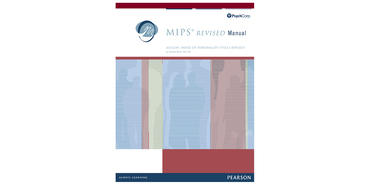The Millon® Index of Personality Styles Revised (MIPS® Revised) test helps assess normally functioning adults who may be experiencing difficulties in work, family, or social relationships. Guidance on using this test in your telepractice.
Millon Index of Personality Styles Revised
MIPS Revised
The Millon® Index of Personality Styles Revised (MIPS® Revised) test helps assess normally functioning adults who may be experiencing difficulties in work, family, or social relationships. Guidance on using this test in your telepractice.Choose from our formats
Kits
Starter & complete kits, print & digital
1 option
Test forms reports
Booklets, record forms, answer sheets, report usages & subscriptions
4 options
Support materials
Manuals, stimulus books, replacement items & other materials
3 options
All products
All tests and materials offered for MIPS Revised
8 options
